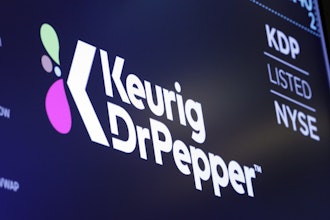
2020 was an up-and-down year for mergers and acquisitions in the food and beverage industry. With the onset of the COVID-19 pandemic in the first half of the year, deal making activity was largely put on hold. In the second half of the year, however, M&A activity resumed in force such that the total number of food and beverage transactions for 2020 actually ended up slightly exceeding 2019. And with private equity firms sitting on a large amount of cash that needs to be deployed and strong corporate balance sheets for strategic buyers, 2021 looks like it should be a banner year for food & beverage M&A. However, buying and selling food & beverage companies presents a unique set of challenges. This article provides an overview of certain legal considerations for parties engaging in M&A transactions in this sector to be aware of with the goal of providing actionable advice to maximize value.
Ownership and Protection of Intellectual property
The “brand” of a food & beverage company is often its most valuable asset. Brands drive value (and, correspondingly, valuations) by inspiring loyalty in consumers, justifying higher price points at which products are sold and providing a platform for new products. And there are numerous facets that contribute to a successful food or beverage brand, including name, logo, packaging, advertising methods and materials, websites and social media content. Buyers in this industry will thus want to spend ample time diligencing the target’s brand and the intellectual property that supports it.
In this context, trademarks, copyrights and recipes are paramount. A buyer should keenly focus on ensuring that trademarks and copyrights are adequately protected by confirming that the target company has registered all core marks associated with the brand with the US Patent and Trademark Office and that essential designs and artwork that appear on labels or packaging are copyrighted. In addition, it is necessary to review any history of infringement and to ensure that the target has taken the requisite steps to defend its intellectual property. As recipes are generally of significant value for food & beverage companies, the target company must also take proper actions to ensure that such recipes are protected as trade secrets.
What practical steps can be taken to protect core intellectual property? First, the target’s employees should execute intellectual property assignment agreements to ensure that any intellectual property created or developed by employees is owned by the company. Second, third-party vendors, such as co-packers, should execute robust agreements ensuring that recipes and other trade secrets are kept confidential and making clear that no rights to the company’s intellectual property are conferred to such third parties. Finally, the target should have internal policies and procedures in place to protect its intellectual property, such as confidentiality protocols with respect to recipes and other trade secrets (whereby such information is only disclosed to employees on a need-to-know basis) and monitoring procedures to ensure that third parties are not infringing upon the target’s trademarks or copyrights.
Compliance with FDA and regulatory requirements
As any operator will tell you, the food & beverage industry is one of the most heavily regulated industries in the US. Accordingly, buyers will want to make sure that the target operates in compliance with applicable regulations, as failure to do so can result in fines, potential lawsuits (including class actions) or even governmental shutdowns. A food & beverage target company must therefore be able to demonstrate compliance with The Food Safety Modernization Act (“FSMA”), Good Manufacturing Practice (“cGMP”) regulations and regulations relating to brand labels and product marketing.
FSMA applies to food manufacturers, distributors and other third parties in the supply chain, such as co-packers. The statute requires all facilities engaged in manufacturing, processing, packing and holding food to register with the US Food and Drug Administration (FDA) and creates compliance obligations, such as preventative food safety controls, focused on preventing food contamination. The FDA is permitted to inspect facilities to ensure compliance. Sellers should be prepared to identify all facilities, including co-packer facilities, that manufacture, pack or hold food in their supply chain and ensure that applicable FSMA controls and procedures are in place at such facilities. Sellers should also be able to produce documents and records demonstrating compliance.
cGMP regulations provide additional minimum requirements for manufacturing facilities to ensure that food is produced under sanitary conditions. These regulations require, for example, that production activities, personnel, equipment and facilities meet certain safety measures focused on sanitization and preventing cross-contamination. The FDA has separate, more onerous, cGMP requirements for dietary supplement companies. Buyers will need to determine which cGMP requirements are applicable and will want to review relevant inspection records, prior FDA warning letters, Form 483s and establishment inspection reports.
Food and beverage companies must also ensure compliance with regulations relating to brand labels and product marketing, which are updated regularly by the FDA. Food labels must disclose ingredients, as well as any major food allergens, such as milk, eggs, certain nuts, wheat, soy and shellfish. Undisclosed food allergens are a top reason for food recalls and class-action lawsuits. Sellers should be prepared to demonstrate compliance with these regulations and be able to explain any prior issues.
Finally, the target company must ensure that product marketing, promotion and advertising, including information contained on its websites, social media and television, comply with FDA and FTC regulations. If such information is deemed misleading, the company could be subject to third-party liability or regulatory actions relating to such products. Buyers will accordingly want to spend time reviewing how the seller markets itself to confirm compliance.
Memorialize relationships with material third parties
A key consideration in maximizing the value of a food & beverage company is the status of its contracts and relationships with significant third parties, such as customers, suppliers, brokers, distributors, label makers, co-packers and landlords. It can be tempting from a simplicity perspective to operate on a handshake basis, particularly with long-term partners. However, it is important that all of the target’s agreements with such third parties are in writing and accurately reflect the economic and legal terms of the relationship, including confidentiality and other protective provisions relating to the target company’s intellectual property. Such written agreements are beneficial from a operations standpoint and make it easy for the buyer to understand the business and its key relationships. Accordingly, sellers should devote sufficient time to organize current, fully-executed copies of all of these agreements for buyer’s review.
Incentivize key employees
Employees are another key asset of a food &beverage company. To ensure that the target business is successful after the deal closes, buyers should consider incentivizing the employees that will remain with target so that they have a vested interest in its success on a go-forward basis. One way to accomplish this is to provide equity incentives to key employees such as incentive compensation or equity options. This allows key personnel to participate in any upside and encourages them to think like owners of the business. Retention bonuses may also be considered to help ensure that key personnel will not leave the company following the closing.
Immigration-related issues
Often, companies in the food & beverage sector, particularly those in the agricultural segment, rely on immigrant labor. However, failure to properly comply with employment-related immigration laws can significantly impact the value of an M&A target. Buyers will accordingly be keenly focused on due diligence in this area, particularly compliance related to the Form I-9 process. Sellers should be prepared to provide information regarding whether there have been government audits with respect immigration compliance, how the target company completes and maintains Forms I-9, and how many company employees are foreign nationals with temporary work authorization, including individuals with employer-sponsored work authorization. Sellers may want to consider implementing an E-Verify program to reduce concerns in this area.
The final word
Food & beverage M&A activity should remain robust for the foreseeable future. However, there are a number of specific challenges that make doing deals in this space unique from other industries. Thankfully, these challenges are manageable if you are aware of them and address them early on in the process. By doing so, you will give yourself the best chance of closing successfully and maximizing value.
Zac Turke and Chris Froelich are members of Sheppard Mullin’s Food and Beverage practice. They have significant experience advising food and beverage in complex mergers & acquisitions, as well as debt and equity financings, venture capital investments, corporate governance and joint ventures and strategic alliances. They can be reached at [email protected] and [email protected] respectively.























